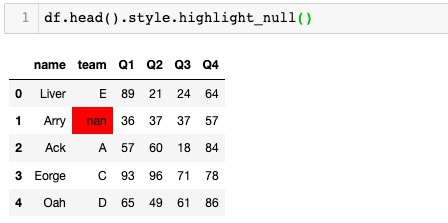我正在为正态分布编写Bayseian分类器.我在python和MATLAB中都有几乎相同的代码.但是,MATLAB代码的运行速度比我的Python脚本快50倍.我是Python的新手,所以也许我做的事情非常糟糕.我假设它是我循环数据集的地方.
可能numpy.argmax()比[〜,idx] = max()慢得多?循环数据框架很慢?字典的使用不好(以前我试过一个对象,它甚至很慢)?
欢迎任何建议.
Python代码
import numpy as np
import pandas as pd
#import the data as a data frame
train_df = pd.read_table('hw1_traindata.txt',header = None)#training
train_df.columns = [1, 2] #rename column titles
这里的数据是2列(300行/样品用于训练,300000用于测试).这是功能参数; mi和Si是样本均值和协方差.
case3_p = {'w': [], 'w0': [], 'W': []}
case3_p['w']={1:S1.I*m1,2:S2.I*m2,3:S3.I*m3}
case3_p['w0']={1: -1.0/2.0*(m1.T*S1.I*m1)-
1.0/2.0*np.log(np.linalg.det(S1)),
2: -1.0/2.0*(m2.T*S2.I*m2)-1.0/2.0*np.log(np.linalg.det(S2)),
3: -1.0/2.0*(m3.T*S3.I*m3)-1.0/2.0*np.log(np.linalg.det(S3))}
case3_p['W']={1: -1.0/2.0*S1.I,
2: -1.0/2.0*S2.I,
3: -1.0/2.0*S3.I}
#W1=-1.0/2.0*S1.I
#w1_3=S1.I*m1
#w01_3=-1.0/2.0*(m1.T*S1.I*m1)-1.0/2.0*np.log(np.linalg.det(S1))
def g3(x,W,w,w0):
return x.T*W*x+w.T*x+w0
这是分类器/循环
train_df['case3'] = 0
for i in range(train_df.shape[0]):
x = np.mat(train_df.loc[i,[1, 2]]).T#observation
#case 3
vals = [g3(x,case3_p['W'][1],case3_p['w'][1],case3_p['w0'][1]),
g3(x,case3_p['W'][2],case3_p['w'][2],case3_p['w0'][2]),
g3(x,case3_p['W'][3],case3_p['w'][3],case3_p['w0'][3])]
train_df.loc[i,'case3'] = np.argmax(vals) + 1 #add one to make it the class value
对应的MATLAB代码
train = load('hw1_traindata.txt');
判别函数
W1=-1/2*S1^-1;%there isn't one for the other cases
w1_3=S1^-1*m1';%fix the transpose thing
w10_3=-1/2*(m1*S1^-1*m1')-1/2*log(det(S1));
g1_3=@(x) x'*W1*x+w1_3'*x+w10_3';
W2=-1/2*S2^-1;
w2_3=S2^-1*m2';
w20_3=-1/2*(m2*S2^-1*m2')-1/2*log(det(S2));
g2_3=@(x) x'*W2*x+w2_3'*x+w20_3';
W3=-1/2*S3^-1;
w3_3=S3^-1*m3';
w30_3=-1/2*(m3*S3^-1*m3')-1/2*log(det(S3));
g3_3=@(x) x'*W3*x+w3_3'*x+w30_3';
分类器
case3_class_tr = Inf(size(act_class_tr));
for i=1:length(train)
x=train(i,:)';%current sample
%case3
vals = [g1_3(x),g2_3(x),g3_3(x)];%compute discriminant function value
[~, case3_class_tr(i)] = max(vals);%get location of max
end
解决方法:
在这种情况下,最好对您的代码进行分析.首先,我创建了一些模拟数据:
import numpy as np
import pandas as pd
fname = 'hw1_traindata.txt'
ar = np.random.rand(1000, 2)
np.savetxt(fname, ar, delimiter='\t')
m1, m2, m3 = [np.mat(ar).T for ar in np.random.rand(3, 2)]
S1, S2, S3 = [np.mat(ar) for ar in np.random.rand(3, 2, 2)]
然后我将你的代码包装在一个函数中并使用lprun(line_profiler)IPython魔术进行分析.这些是结果:
%lprun -f train train(fname, m1, S1, m2, S2, m3, S3)
Timer unit: 5.59946e-07 s
Total time: 4.77361 s
File: <ipython-input-164-563f57dadab3>
Function: train at line 1
Line # Hits Time Per Hit %Time Line Contents
=====================================================
1 def train(fname, m1, S1, m2, S2, m3, S3):
2 1 9868 9868.0 0.1 train_df = pd.read_table(fname ,header = None)#training
3 1 328 328.0 0.0 train_df.columns = [1, 2] #rename column titles
4
5 1 17 17.0 0.0 case3_p = {'w': [], 'w0': [], 'W': []}
6 1 877 877.0 0.0 case3_p['w']={1:S1.I*m1,2:S2.I*m2,3:S3.I*m3}
7 1 356 356.0 0.0 case3_p['w0']={1: -1.0/2.0*(m1.T*S1.I*m1)-
8
9 1 204 204.0 0.0 1.0/2.0*np.log(np.linalg.det(S1)),
10 1 498 498.0 0.0 2: -1.0/2.0*(m2.T*S2.I*m2)-1.0/2.0*np.log(np.linalg.det(S2)),
11 1 502 502.0 0.0 3: -1.0/2.0*(m3.T*S3.I*m3)-1.0/2.0*np.log(np.linalg.det(S3))}
12 1 235 235.0 0.0 case3_p['W']={1: -1.0/2.0*S1.I,
13 1 229 229.0 0.0 2: -1.0/2.0*S2.I,
14 1 230 230.0 0.0 3: -1.0/2.0*S3.I}
15
16 1 1818 1818.0 0.0 train_df['case3'] = 0
17
18 1001 17409 17.4 0.2 for i in range(train_df.shape[0]):
19 1000 4254511 4254.5 49.9 x = np.mat(train_df.loc[i,[1, 2]]).T#observation
20
21 #case 3
22 1000 298245 298.2 3.5 vals = [g3(x,case3_p['W'][1],case3_p['w'][1],case3_p['w0'][1]),
23 1000 269825 269.8 3.2 g3(x,case3_p['W'][2],case3_p['w'][2],case3_p['w0'][2]),
24 1000 274279 274.3 3.2 g3(x,case3_p['W'][3],case3_p['w'][3],case3_p['w0'][3])]
25 1000 3395654 3395.7 39.8 train_df.loc[i,'case3'] = np.argmax(vals) + 1
26
27 1 45 45.0 0.0 return train_df
有两条线共占90%的时间.所以让我们将这些行分开一点然后重新运行探查器:
%lprun -f train train(fname, m1, S1, m2, S2, m3, S3)
Timer unit: 5.59946e-07 s
Total time: 6.15358 s
File: <ipython-input-197-92d9866b57dc>
Function: train at line 1
Line # Hits Time Per Hit %Time Line Contents
======================================================
...
19 1000 5292988 5293.0 48.2 thing = train_df.loc[i,[1, 2]] # Observation
20 1000 265101 265.1 2.4 x = np.mat(thing).T
...
26 1000 143142 143.1 1.3 index = np.argmax(vals) + 1 # Add one to make it the class value
27 1000 4164122 4164.1 37.9 train_df.loc[i,'case3'] = index
大部分时间用于索引Pandas数据帧!取argmax仅占总执行时间的1.5%.
通过预先分配train_df [‘case3’]并使用.iloc,可以稍微改善这种情况:
%lprun -f train train(fname, m1, S1, m2, S2, m3, S3)
Timer unit: 5.59946e-07 s
Total time: 3.26716 s
File: <ipython-input-192-f6173cdf9990>
Function: train at line 1
Line # Hits Time Per Hit %Time Line Contents
======= ======= ======================================
16 1 1548 1548.0 0.0 train_df['case3'] = np.zeros(len(train_df))
...
19 1000 2608489 2608.5 44.7 thing = train_df.iloc[i,[0, 1]] # Observation
20 1000 228959 229.0 3.9 x = np.mat(thing).T
...
26 1000 123165 123.2 2.1 index = np.argmax(vals) + 1 # Add one to make it the class value
27 1000 1849283 1849.3 31.7 train_df.iloc[i,2] = index
尽管如此,在紧密循环中迭代Pandas数据帧中的各个值是一个坏主意.在这种情况下,使用Pandas仅用于加载文本数据(它非常擅长),但除此之外使用“原始”Numpy数组.例如.使用train_data = pd.read_table(fname,header = None).values.当你到达分析阶段时,可能会回到熊猫身上.
其他一些说法:
>使用Python的基于零的索引,不要忘记使用
基于单一的索引.
>考虑使用普通的Numpy数组而不是矩阵.当你使用
矩阵你倾向于将它们与数组混合在一起并且难以调试
问题.
> MATLAB有一个JIT编译器,所以Python和Python之间存在速度差异
MATLAB预计用于循环繁重的代码.




